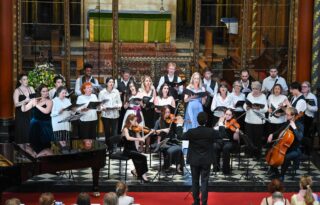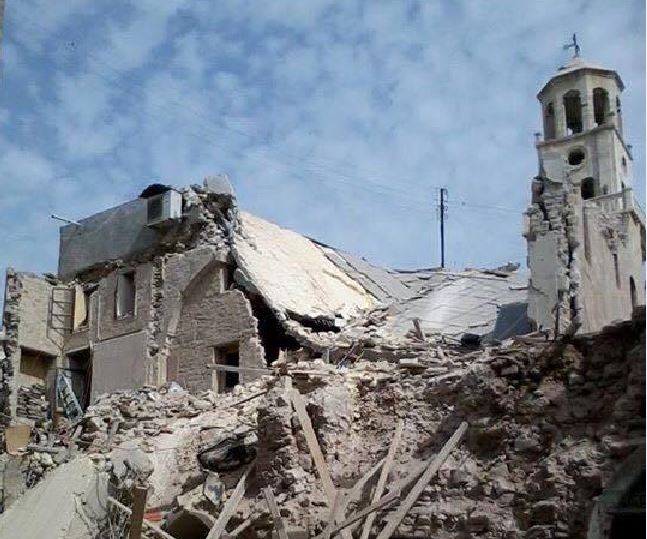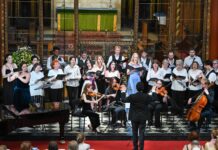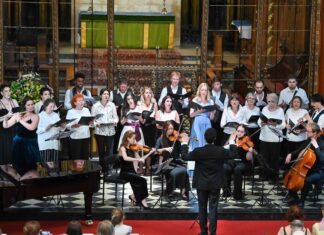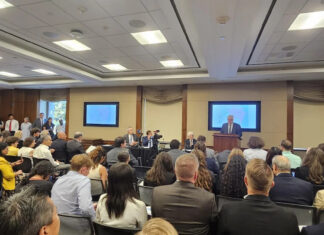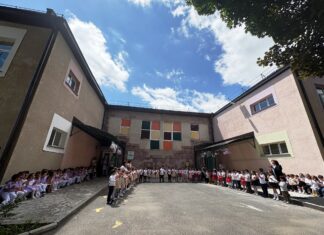By Elisabeth Hellenbroich
BERLIN — At the beginning of 2018 a booklet was published by Aid to the Church in Need (ACN International), a charity of pontifical right which through its offices in 24 countries supports Christians wherever they are persecuted, oppressed or in material need through information, prayer and action). The booklet provides a very moving testimony to the immense destruction which was caused by the war in Syria that began in 2011 and led to the total destruction of many parts of the country — killing half a million Syrians and forcing almost 12 million Syrian citizens to flee their homes.
During this war, the Christian population was targeted with particular brutality, which included the slaughtering of Christians by jihadist forces, ransacking their holy places and homes as well as symbols. Almost no attention has been given so far to the immense damage that was inflicted by the Islamic State in Iraq and Syria (ISIS) to Christian holy places, churches, monasteries, cemeteries and youth centers. The booklet provides information for the first time on how reconstruction has begun in several holy places, offering renewed hope to the thousands of Christians that were persecuted by the fanatical Jihad forces and had to flee their homes.
The publication comes thanks to the initiatives of a joint commission of Catholic and Russian Orthodox priests which was created in the aftermath of the historic meeting between Patriarch Kirill of Moscow and All Russia and Pope Francis in Havana, on February 12, 2016.
The preface of the booklet was written by Metropolitan Hilarion of Volokolamsk, chairman of the Department for External Church Relations Moscow Patriarchate, and by Cardinal Kurt Koch, President of the Pontifical Council for Promoting Christian Unity.
In reference to the “historic” meeting which took place between Pope Francis and Patriarch Kirill, Hilarion emphasized that “the two first hierarchs were motivated by the really catastrophic situation in which our brothers and sisters in Christ found themselves because of military conflicts and the invasion of extremists into the ancient Biblical land of the Middle East and North Africa. Irreparable damage has been done to Christianity in the region. Thousands of Christians died as martyrs, Millions were left without shelter and had to flee from the country. Hundreds of church buildings, monasteries and holy sites were desecrated and ruined.” He underlined that “interreligious dialogue” is a key tool for protecting Christians from prosecution and that it is important to note that “the Syrian Christians used to live amid Muslims for centuries and good-neighborly and peaceful co-existence is a priority to them.” With the assistance of the Moscow Patriarchate, humanitarian cargos were delivered to the Valley of Christians in Homs province, to Aleppo and other cities of Syria, he reports, now that the main terrorist forces have been defeated. “The post-war structuring of Syria has become a priority. It is necessary to restore churches, infrastructure and residence buildings, to create conditions for regular celebration by clergy, and for safety and security.” He particularly thanked the Foundation ACN for its support and expressed hope that “the booklet will contribute to the restoration of the churches and holy sites in the ancient land of Syria where the word ‘Christians’ was first pronounced.”
